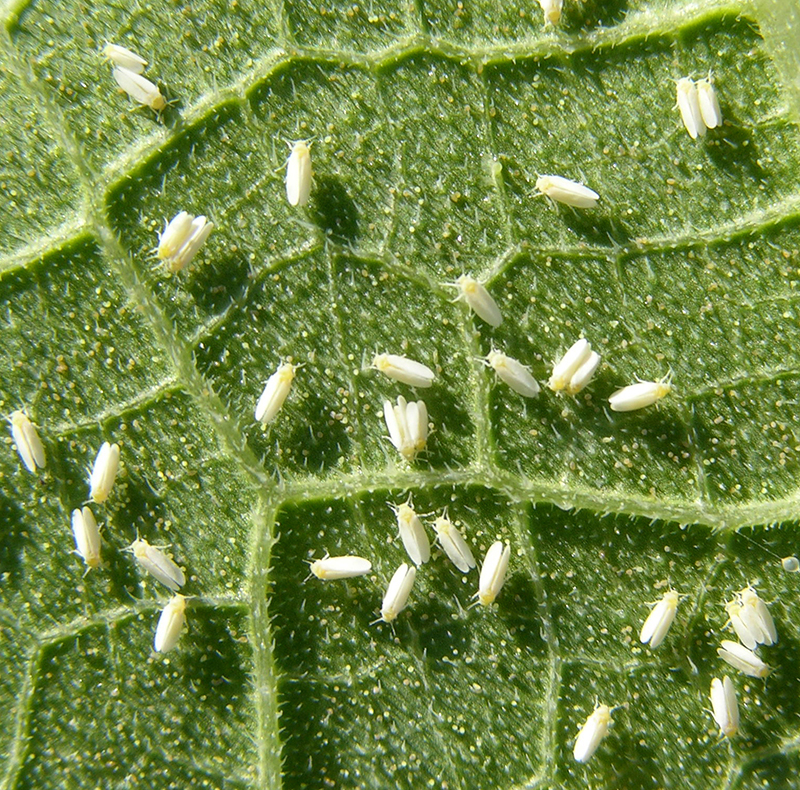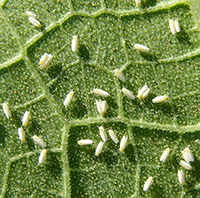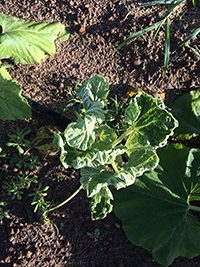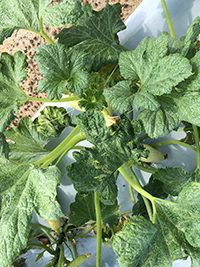Silverleaf whiteflies devastated Georgia’s cotton and fall vegetable crops last year. In response to this crisis, a team of University of Georgia College of Agricultural and Environmental Sciences research and UGA Cooperative Extension specialists is studying the pests statewide to help cotton and vegetable farmers avoid another year of disappointing crops.
“Teams are an important part of UGA. Many of the issues agriculturists face today require a collection of scientists from differing disciplines with differing expertise to address complex issues. The silverleaf whitefly fits the bill here,” said Phillip Roberts, UGA Extension cotton and soybean entomologist and Whitefly Team member. “Not only are whiteflies a direct pest of plants as a result of feeding, but they also transmit several viruses to vegetables that can have a devastating effect on virus-susceptible crops.”
UGA Extension established the UGA Whitefly Team, and each team member brings a specific area of whitefly expertise. In addition to Roberts, the team includes:
- Jason Schmidt, entomologist specializing in biocontrol
- Mark Abney, peanut research entomologist
- Mike Toews, cotton and soybean research entomologist
- Stormy Sparks, UGA Extension vegetable entomologist
- Rajagopalbabu Srinivasan, vector biologist
- Bhabesh Dutta, UGA Extension vegetable pathologist
- David Riley, vegetable research entomologist
- Tim Coolong, UGA Extension vegetable specialist
- Sudeep Bag, crop virologist
- Apurba Barman, postdoctoral candidate
The mild winter of 2016-17 enabled whiteflies to continue to feed on plant hosts and become a major nuisance for cotton growers in the early summer of 2017.
Fortunately for Georgia farmers, whitefly populations are considerably down when compared to this time last year. A colder winter, including several hard freezes in January, eliminated the reproductive host plants, like cultivated crops and weeds, on which whiteflies feed.
“We’re not seeing any significant outbreaks of viruses yet. It was probably June or July when we saw that last year, right at the end of the spring crop,” Sparks said. “Last year, we had growers who were treating whiteflies in the middle of winter on some of their winter crops. On the spring crops, they were being treated by mid-May. Right now, it’s nothing like we experienced last year.”
Whiteflies migrate from winter vegetables to spring vegetables to agronomic crops, like cotton, to fall vegetables and back to winter vegetables, according to Roberts. If producers don’t adequately scout for these insects, they could face a whitefly epidemic.
“Failure to properly manage whiteflies in any one of these systems could have negative consequences on remaining cropping systems,” Roberts said. “Early detection of whiteflies in any cropping system is critical for successful management, as appropriate insecticides must be applied before the population builds to damaging levels.”
Whiteflies cause feeding injury issues in vegetables and transmit two new viruses: cucurbit leaf crumple virus and cucurbit yellow stunting disorder virus. Vegetables like squash, zucchini, cucumber, cantaloupe and snap beans are highly susceptible to these viruses. Commercial cultivars that have resistance or tolerance to these pathogens are not available.
According to the UGA crop loss estimates, these viruses caused between 30 and 50 percent of squash and cucumber crop loss and nearly 80 percent of snap bean crop loss in fall 2017.
Dutta and Coolong screen different cultivars and germplasms, and they advance breeding lines of squash, snap beans and zucchini for cucurbit leaf crumple virus resistance. They hope to find resistance lines for the viruses that whiteflies transmit.
Barman, a postdoctoral researcher under Toews, set yellow sticky traps at 125 field sites across southern Georgia to detect whiteflies. Each week, Barman and his colleagues drive more than 800 miles to collect and replace traps in 24 different counties. The traps are located as far west as the Georgia-Alabama border; as far east as Vidalia, Georgia; as far north as Cordele, Georgia; and as far south as Thomasville, Georgia.
“I hope that our traps will be able to detect when there is a whitefly population buildup or migration in one of those specific locations. Following that lead, we should be able to target the crop or host plants responsible for such population buildup around the trap. Simultaneously, we could communicate with the county Extension agents and consultants to manage that whitefly population locally,” Barman said.
He will also provide weekly updates on whitefly numbers through an interactive, online map, which will allow the UGA Whitefly Team to monitor any whitefly hot spots throughout the growing season.
Scouting and timely insecticide applications remain the best course of action against whiteflies. However, UGA experts encourage growers to conserve beneficial insects and only apply insecticides when whitefly infestations are found. Destroying whitefly host crops after harvest will also eliminate further reproduction.
“We need to watch for them in the next three months. For the most part, in Tift and Colquitt counties, it’s not a matter of if they’re going to show up, but when,” Sparks said.
For more information about whiteflies, contact your local UGA Extension office at 1-800-ASK-UGA1.










